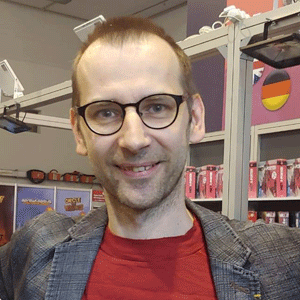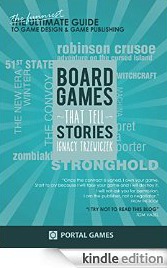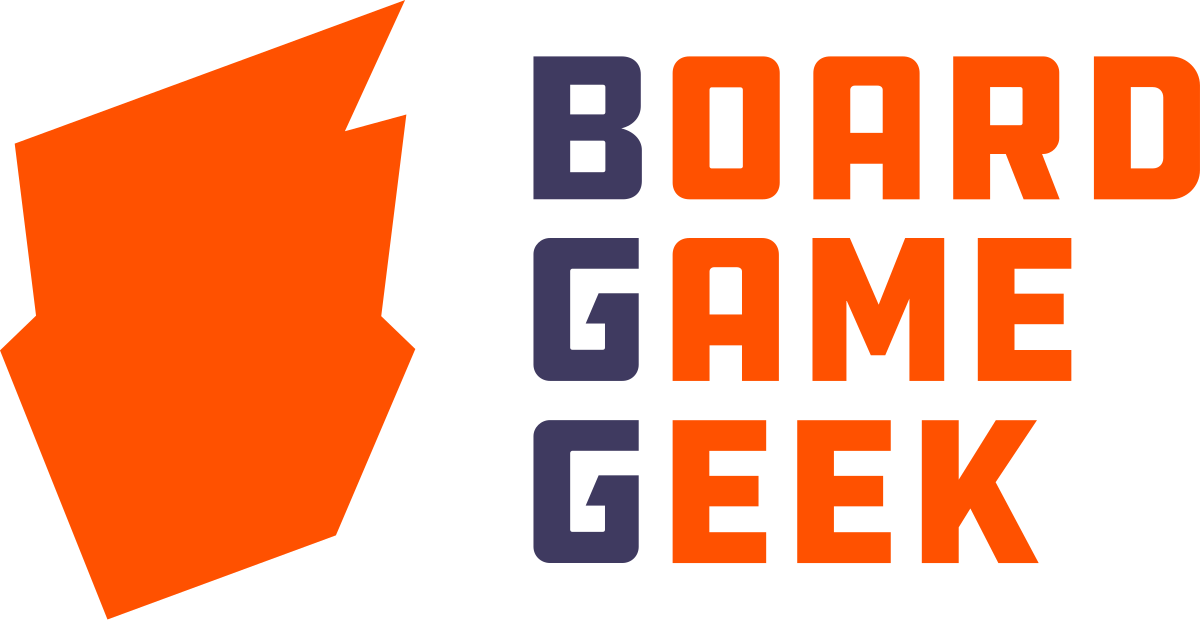 Players sometimes ask me what soundtrack I recommend to listen to when they play one of my games, like Stronghold or Robinson Crusoe. I am known as thematic designer, my games are all about story and engagement of players and soundtrack seems like obvious choice.
Players sometimes ask me what soundtrack I recommend to listen to when they play one of my games, like Stronghold or Robinson Crusoe. I am known as thematic designer, my games are all about story and engagement of players and soundtrack seems like obvious choice.
Well, it is not.
I don’t play with soundtrack.
When I was playing RPG games I was all about building atmosphere and building tension and I was using music like a madman (or rather like DJ). I was changing songs and CDs all the time, I was playing slow music, fast music, epic music, depending on scene, depending on scenario I had everything earlier prepared – whole OST with different songs for each part of scenario. I was crazy.
Today when I play board games, I don’t use any music, I just focus on rules, games mechanism and I don’t want to be distracted by any soundtrack. OK, except the moment when I play X-Wing. You just can’t play it without OST, right?
Being that said…
Last week I watched Ricky Royal video dedicated to Voyage of the Beagle. And I have to say, little, subtle trick Ricky did struck me like a bolt. Ricky did not use a soundtrack. He used sound effects.
Play from 5:18 to see what I am talkin’ about. In a split of a second the theme is build. The same trick in his second video. Watch at 3:06
I think I am still not for soundtrack and music when I play board games. But such a special effects here and there… That would be freaking awesome. Watching these movies, hearing these sounds I felt like I was there. It was just a subtle touch, but hell, it worked!
 It was November. Dallas. I was standing in the line at the airport for boarding. I tweeted something like: „8 hours flight. What podcast do you recommend?” HyperboleGrant quickly replied: „Serial”
It was November. Dallas. I was standing in the line at the airport for boarding. I tweeted something like: „8 hours flight. What podcast do you recommend?” HyperboleGrant quickly replied: „Serial”
I did not managed to download it in time for boarding, but I hit 'Subscribe’ button. I will check it when I reach Poland, I decided.
I reached Poland. I forgot about Serial.
***
I started listening Serial few weeks ago. First episode, second episode, third… And then all of them just in one weekend. It was a crazy ride. I couldn’t stop. The story was so engaging, so complicated, everything was so tense and jumbled. The way podcast was produced was brilliant. With great soundtrack, with fragments from actual court scenes or interrogations rooms.
Serial is a masterpiece.
Best storytelling piece I heard for years. Perhaps even the best storytelling piece I heard in my life.
It was an amazing experience.
And yet, HyperboleGrant will not hear 'Thank you, man’
And yet, HyperboleGrant should not be proud of his recommendation.
And yet, HyperboleGrant is the last person I will ask for advice next time…
***
Since the day I listened last episode of Serial I never listened to other podcast. I look at Podcasts icon on my Iphone screen and I sight with longing.
For the past month I haven’t listen to any board games podcasts (with 2 small exceptions).
I miss Anthony and his loooong Cardoard Jungle. I miss Tony and Marty and their Rolling Dice. I miss The Secret Cabal crew…
It’s all because Serial. I can’t accept it’s over. I can’t get over it. It’s your fault man. Shame on you HyperboleGrant!
 It was some time ago when I heard about VivaJava: The Coffee Game for the first time. What a stupid idea I thought. In my defense I can say only two things: I don’t drink coffee and I don’t know what even VivaJava means. I didn’t pay attention to any news about this game and I labeled it as a stupid idea. Game about coffee? Really?!
It was some time ago when I heard about VivaJava: The Coffee Game for the first time. What a stupid idea I thought. In my defense I can say only two things: I don’t drink coffee and I don’t know what even VivaJava means. I didn’t pay attention to any news about this game and I labeled it as a stupid idea. Game about coffee? Really?!
It was also some time ago when I first heard about Compounded. Game about chemistry. OMG, that was bad theme for a game! For me chemistry equaled school and serious problems. Yeah, trust me, I had some problems with chemistry when I was in college. When I saw cover art for Compounded and its logo I really liked it. If only it is not about chemistry, huh?
It was a few months ago when I saw cover art for New Bedford. I saw it on the front page of BGG site and I gave this cover Thumb Up even though usually I don’t do this. Some publishers are my friends, some are not, I try to not thumb up too often. It’s geeks, gamers, users job to give thumbs, not publishers. But well, this cover was a masterpiece. Thumbs up from me.
Three dots. VivaJava, Compounded, New Bedford. Believe it or not, but at this point I wasn’t able to connected these dots yet…
***
It was BGGcon when I was playing Black Fleet with a bunch of gamers, having a tremendous time and talking about games. At some point discussion was about good game for 7 players and they mentioned VivaJava.
This coffee game?! I asked really surprised.
It’s very good, especially with 6 or 7 players! they replied.
A coffee game?! It was hard for me to believe it.
Yes, it is pretty neat. You should try it.
That was a surprise for me but, well, if they say I should try, I have to try. I noted down to check coffee game later.
That was an epic moment of my ignorance, but well, I am just this funny dude from Poland, right? After I came to Poland, it finally clicked. Listen to this…
The cool guy with whom I was battling like crazy in Black Fleet happened to be Darrel Louder, designer of Compounded. I began to investigate this. I discovered that Compounded was published by Dice Hate Me Games, publisher who also published VivaJava. And then I discovered that not only Compounded looks amazing, but VivaJava also is a beautiful, stunning graphic design. And yes, of course, few seconds later I discovered that this amazing cover for New Bedford is part of the team – Dice Hate Me Games.
Oh, really?
It took me a few years. I was receiving different signals and finally I managed to connect it all, to put it on the map along with a Dice Hate Me podcast, with Unpub events and with T.C. Petty III, with whom I was tweeting like crazy at Gen Con 2013 trying to set a session of Robinson Crusoe. It was all here, in front of my eyes.
***
Every story needs an ending. I prefer good endings and this story has one. First of all, I have Compounded on my desk, signed by Darrell. VivaJava is in my top5 games to bring home from Gen Con 2015. But there is more. I realized one more thing. Super tiny but funny detail. It was Chris Kirkman, CEO of Dice Hate Me Games who bought the very last copy of Why Can’t We Be Friends at BGG.con
In the evening I found one lost copy of this expansion in my luggage and I think I tweeted about this or something, and Chris found me and bought it. Of course, I had no idea that he is the guy behind all these great designs and games. It was few days before I connected the dots.
***
Two weeks ago Imperial Settlers won Dice Hate Me Game of the Year runner up award. Luckily, at this point I had all dots connected.
Last weekend was pretty unusual for me. Believe it or not, but I did not play any new games. Yeah, I know. It’s like hashtag woow, hashtag really?!
It was crazy rush to discover all those new releases from Gen Con, and then to discover all those releases from Essen, and then to play games I brought from BGGcon (and in the meantime trying to catch up with different releases on Polish market). It was six months of reading rulebooks, setting up new games over and over. Playing new game once or twice and opening a new one. And another one. And another one.
So last weekend we did with Merry something extraordinary. We closed (literally!) all those new ’to-play’ games in a closet and we decided we won’t open it for a few days. Then we took old games from shelf. Those with dust on them. Those we love and we had no time to play for a long time.
We played Lewis & Clark. We played Dragonheart. We played Theseus. And I tell you, it was a tremendous weekend.
With old game it is so simple. When you play it, you feel like home. You know all rules, you don’t browse through rulebook, you don’t feel confused. You feel comfortable, you feel safe.
You can really explore the mechanisms. You start seeing all those small cogs that fuel the game. You can easily understand what does opponent (this is so important!) and prepare and react for that. You see the whole picture, the whole game play instead of just trying to understand what’s going on on your part.
If I can make a crazy comparison I’d say that playing those new games over and over is like watching one episode of a great show. It’s like watching 5th episode of House of cards. It’s like watching 8th episode of Homeland. It’s like watching 11th episode of Lost.
You watch this episode, you understand there is something here, something you like, but to be honest you don’t exactly understand what’s going on.
Playing old game, is like starting to watch first episode of second season of House of Cards after you just finished season 1. You now everything, you understand the plot, you know characters, you are ready to taste it with all your senses. It’s a treat.
So my message to you today is – give old games some love. I promise you, you won’t regret it. Hashtag treat.
MY DESIGN PHILOSOPHY
 I strongly believe that good board game is the one that tells a good story. You play it and suddenly you are sucked into it, you feel chills on the skin. Emotions grow. In a moment you defend castle. You hear roar of warriors. You smell boiling oil. You are into it.
That's how I design my games. I always want to tell a good story. I want players to be into it. As deep as possible.
I strongly believe that good board game is the one that tells a good story. You play it and suddenly you are sucked into it, you feel chills on the skin. Emotions grow. In a moment you defend castle. You hear roar of warriors. You smell boiling oil. You are into it.
That's how I design my games. I always want to tell a good story. I want players to be into it. As deep as possible.VISIT BTTS AT BGG
Subscribe to Blog via Email
Twitter feed
BGG has some testimonials about AI Space Puzzle and I like them a lot! 📷
Just had a long call with Adam Kwapiński discussing abilities and powers in the faction I designed for Nemesis: Retaliation!
I cannot wait for you to change Island setting into Space base and die again... 😉
1/3
🌴 Robinson Crusoé - Aventures sur l’Île Maudite 🧭
Ça y est, Robinson Crusoé effectue son grand retour ce vendredi ! Suite à un naufrage… vous serez confrontés à une aventure extraordinaire, dans laquelle il va être question de gestion, construction, exploration…
Back in the office! Excited to dig into all these "I'll do it after Essen" topics! 😉








